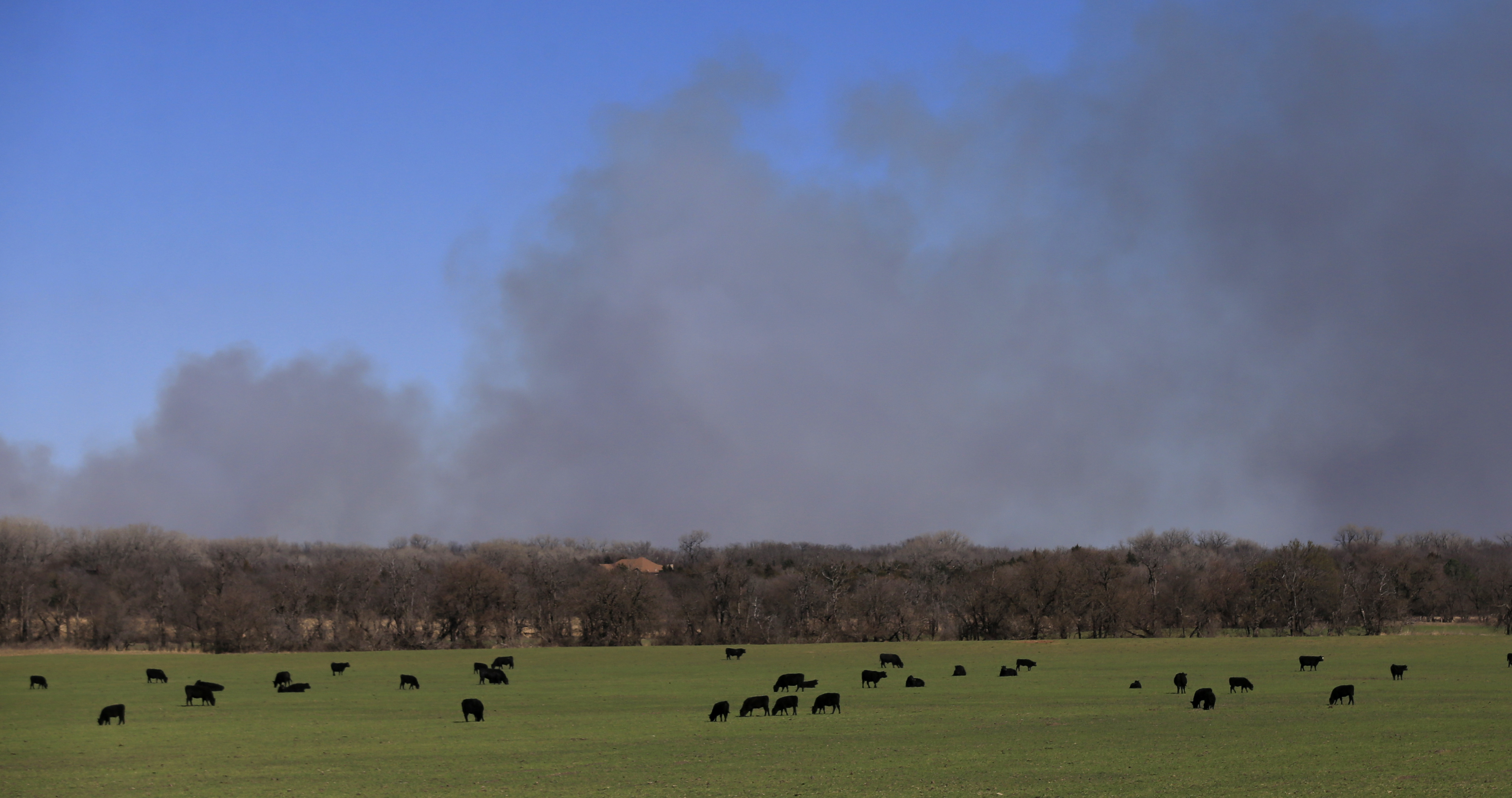
These are tough times in the nation’s breadbasket. Commodity prices are down, and when a wildfire swept through sections of Kansas a little over a week ago, it devastated entire farm communities and killed livestock.
So a Minnesota woman is sending hay.
“They still answer the phone ‘good morning’ when they’re sitting in a town that is desolate; it’s destructed,” Patty Bixby, a Gilman, Minn., resident tells the St. Cloud Times. “All you can smell is death and smoke. Everything is burnt. The farmers still say ‘good morning’ when they’ve lost 4,000 acres of wheat, when they’ve had to shoot their own cattle to alleviate their suffering or shoot their horses because their eyes have been burnt out.”
Farmers in Minnesota have their own problems, but they’ve responded to Bixby’s call to help the people of Kansas, donating hay, supplies, and whatever money they can spare.
“I still don’t feel qualified to put myself in the same bracket as farmers. Because they’re just incredible, big-hearted people. I’m still in training,” she tells the paper.
“The fires are massive, they had 75-mile-per-hour winds blowing the fire over highways, ranch hands were killed, trucks and trailers were flipped, and the livestock burned. And where was the news?” Bixby said. “I started sharing the story as much as I could. I thought, someone has to do something to help these people. I’m recovering from surgery, and I thought — I’ve got nothing but time. I can make the calls.”
Yesterday, the first truckload of hay was loaded at the Gilman Cooperative Creamery.
Gilman Cooperative Creamery has become the donation center for the project. Tina Peschl, a representative from the creamery, said they have already collected over 100 large bales of hay, and are expecting more donations to come in on the backs of semis.
“(The hay drive) is huge, because this year really kind of sucked for farmers. Milk prices are down, and they had a bad year to begin with. But they’re all ready to donate to people who have it worse than them,” said Peschl.
“It’s a team, it really is,” said Bixby. “We’re a population of about 200 — four times as small as the community we’re donating to — but we can make a dent.”
Why hay?
There’s no grass left and nothing to keep cattle alive.
“Many of these ranchers in the hardest hit areas have lost a considerable amount of fence, livestock, resources and harvested feed, including hay,” said Todd Domer, of the Kansas Livestock Association. “In addition to that, a lot of them lost ranch homes and outbuildings that were on their property. In some cases, these ranchers don’t have much left, and the donations mean so much because the cattle that survived can be sustained until they get some moisture and the grass starts to come back.”
“This isn’t just land burning, these are lives that have burnt,” Bixby tells the Times. “For these people to stand back up … it’s incredible. And we can make a dent. Minnesota is strong, and we wanted to help, we could help, but we didn’t know how to pull it together. And now we have.”
“We are helping fellow neighbors, they’re just a little farther down the road.”
